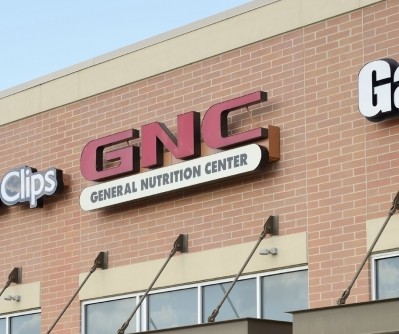GNC's revenues drop 8%; stock price dives by 25%

GNC executives attributed the company’s poor performance to a restructuring effort that is incomplete. Problems with pricing, a confusing loyalty program and an inventory system that seems to have gone off the rails were among the issues mentioned in an earnings call with analysts.
Dramatic market reaction
The supplement retailing giant’s reported revenue and profits were deep disappointments to analysts, who were anticipating the company’s restructuring and turnaround efforts would be showing more momentum by now. The market reacted violently, with the company’s stock price plunging by about 20% within the first few minutes of trading this morning (the earnings were release prior to market opening). After a brief and modest rebound, the slide continued, with the stock trading at $15.13 at the closing bell on the New York Stock Exchange, for a one day loss of almost 25%. GNC's stock was trading at more than $60 a share in late 2013.
GNC’s revenue plunged 8.1% to $628 million, compared to the prior-year quarter. Analysts had projected the revenue number would come in at about $651 million. Revenue decreased by 7% in the US and Canada, and 18.7% in stores elsewhere in the globe. Earnings were also disappointing, coming in at 59 cents a share, with analysts hoping for 71 cents.
Same store sales, including GNC.com sales, decreased 8.5% in domestic company-owned stores, or 6.4% if the online sales are excluded. The company chose to halt bulk sales in the quarter, which affected online sales. GNC said it halted the bulk sales because bulk buyers were reselling the products on other websites, undercutting the prices at its brick-and-mortar locations. Franchise sales were off even more steeply, declining 8.9% in the quarter.
Interestingly, while protein demand is said to be rising throughout the industry, the ingredient category was a loser for GNC. The company listed the product categories that dragged down sales the most as proteins, vitamins and the food and drink businesses.
CEO Robert Moran gave a number of reasons for the poor performance. Since taking the helm in late July, Moran had conducted a thorough review of the company’s operations. Moran is the company's third CEO in a little more than two years; his predecessor Mike Archbold took over from Joe Fortunato in early August, 2014.
“What we found was a badly broken business model in need of change,” Moran told analysts in a conference call on Thursday morning. A transcript of the call is posted on the site seekingalpha.com.
Going from having too much to not enough
The company’s in-store experience has been cited as a weak point for a while and Moran pledged several initiatives to turn that around more quickly. The company will accelerate the installation of a new checkout system, as the existing system is cumbersome, leading to long transaction times that irk both employees and customers. And the company will more quickly revamp its inventory and supply system. In the past, the poor performance of this part of the business led to a nasty surprise—a big backlog of soon-to-expire product that had to be deeply discounted. This debacle was one of the things that apparently led to Archbold's ouster. Now the inventory pipeline is failing in another metric: Having enough of the most popular products on the shelf.
“Our stores have too many out-of-stocks and that is unacceptable. The fastest way to lose a customer is to be out-of-stock on a product when they want it. And as a company that manufactures a significant percentage of our products and ships from our own DCs (distribution centers), this simply has to change,” Moran said. Moran said appointing Jay Kent to the newly created position of chief supply chain officer will help clean up this issue.
One price is better than many
Similarly, the company recently created the title of chief merchandising officer and filled it with Tim Mantel. Mantel will bear the burden of revamping the company’s pricing structure, which has come to have so many levels and disclaimers that Moran said it makes many customers believe that products always cost more at GNC than they might elsewhere, even when that is not the case. Mantel will also have the job of rolling out a new loyalty initiative in 2017 to replace the company’s outdated Gold Card program, which was the brainchild former CEO Joe Fortunato. During his tenure the program had driven sales increases, but turned out to be very costly in its own right. Mantel will also be tasked with finding new, more cost effective ways to reach customers through social media and other platforms.
Moran said the “new GNC” will launch by the end of 2016 and will include, “a lower single product pricing philosophy, a reinvigorated new product pipeline, both our free and paid loyalty program, new customer facing technology which includes terminals, tablets, Wi-Fi and a new mobile app that improves and personalizes the shopping experience.”

















